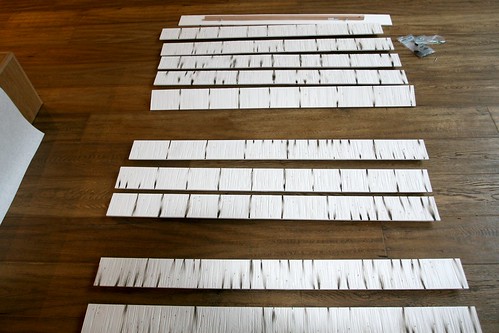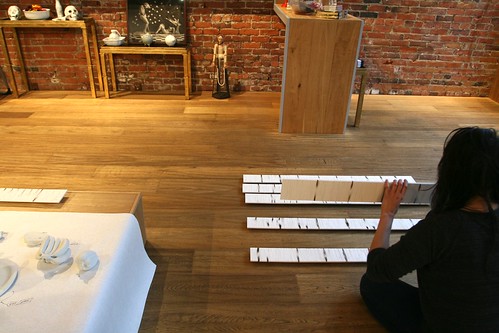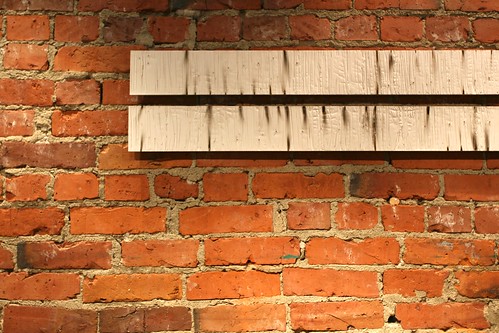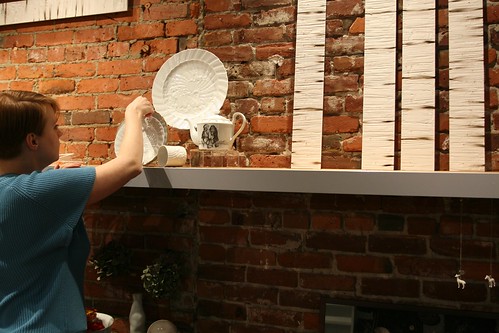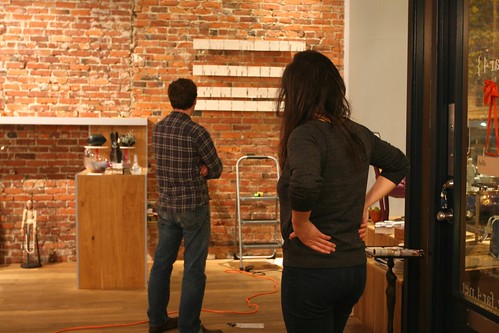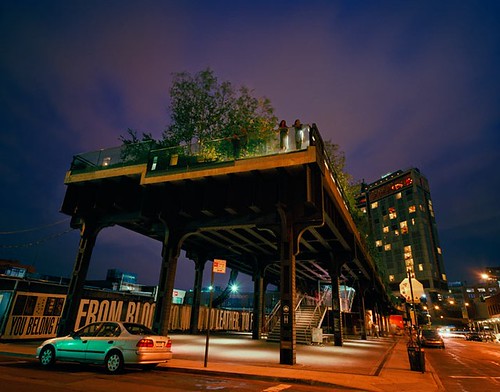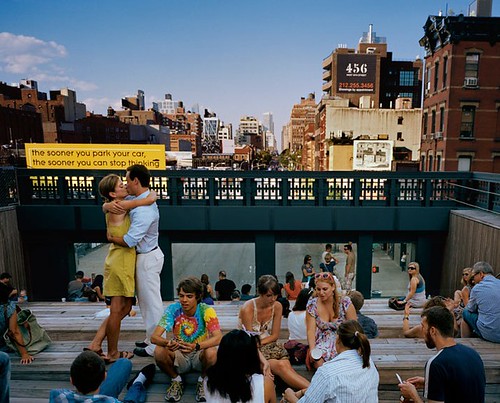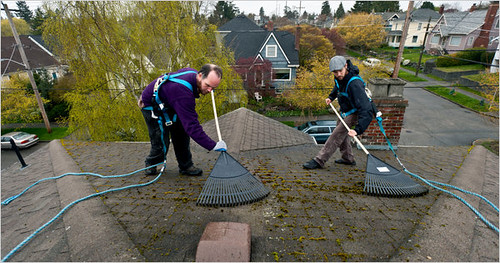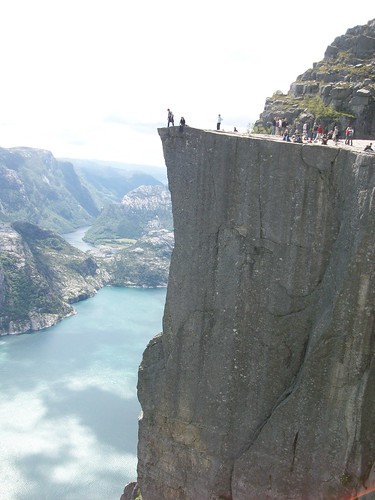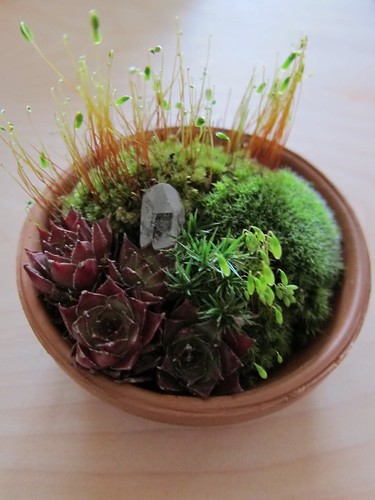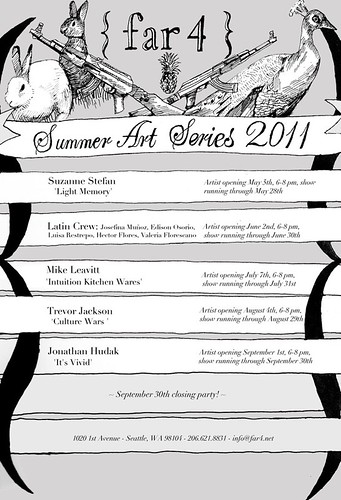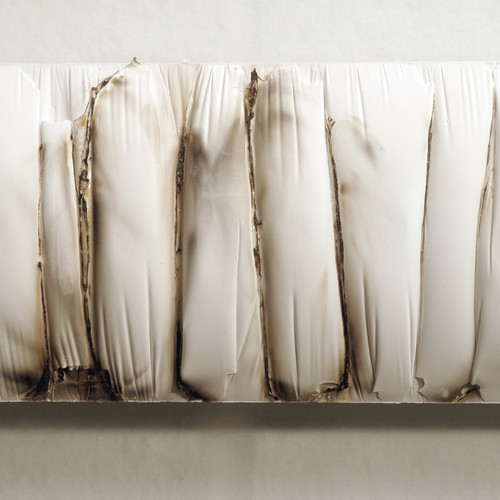
When you are at the home of sculptor and architect
Suzanne Stefan, there is one thing that becomes very clear; everything she comes into contact with has been carefully siphoned through her aesthetic filter. The colors are mostly nudes, creams, and bleached woods, the music is calm, the candles float in water, and the few books that she has on display are on the works of Peter Zumthor, James Turrell, and Luis Barragan – champions of light and space.
Stefan first learned to explore light through the medium plaster while attending architecture school. The school chose a few students to participate in a seminar led by sculptor Carlton Newton, and she was one of them. Following the introductory course, she continued to teach new first year architecture students the various techniques each semester. Ten years later, she still balances her professional life as a practicing project architect with her more abstract experiments of light and space through her sculpture.
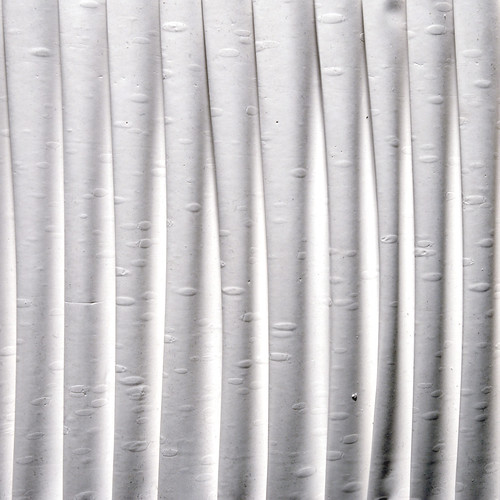 the above images are from the artist.
AM: Tell me a little about your process and approach to sculpture.
SS: With each piece there is always a new discovery, so I need to pay close attention to the process: what type of plastic I used to create the folds, the ratio of mixtures, the heat and humidity, the surface I am casting against, and the additional fibers I sometimes add. There is an amazing range to be found in those variables alone.
the above images are from the artist.
AM: Tell me a little about your process and approach to sculpture.
SS: With each piece there is always a new discovery, so I need to pay close attention to the process: what type of plastic I used to create the folds, the ratio of mixtures, the heat and humidity, the surface I am casting against, and the additional fibers I sometimes add. There is an amazing range to be found in those variables alone.
In the beginning they were just about my fascination with light and shadow, but then I started burning away the form generating materials, so then they also began to be about the memory of light – which is different, but related.
AM: It sounds like your work is very much about the discoveries you make along the way, how do you plan future work?
SS: I always begin with images I create in my mind, if that makes sense. From there, I usually sketch and plan the order, scale, and intended surface, but the results always have an element of surprise.
For example, once I was making multiple sculptures for a series, and one of them was accidentally ignored. In my neglect to shake the mould thoroughly as the others, I was able to discover that the air bubbles created voids at the most beautiful points in the surface. The process of making is therefore a large part of the art itself.
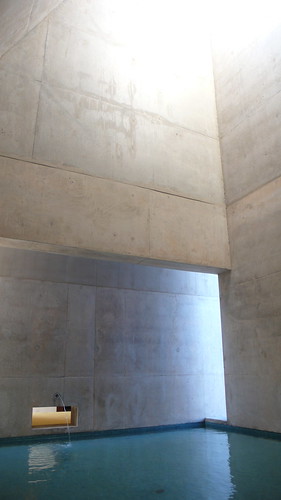 above is a detail from Amangiri, for which Stefan was a project architect | photo by Marwan Al-Sayed
AM: Do you ever think about integrating your sculpture into architecture?
SS: Of course. For me it is only a shift in scale, and other tools and people would be needed. The scale I work in allows me to work alone and control many of the factors within the process. Everything is at the human scale too; the sculptures need to be small enough for me to handle, the folds are only as fine as my fingers can create, and the thickness depends on how much I can mix and pour.
Besides, I think a really good architect can see sculpture as potential architectual space itself. Architecture is just a larger form of sculpture, and a successful design is related to the quality of light it creates. It is even more successful if it functions too.
AM: Off the top of my head, I can name India, Belgium, East Africa, New York, Virginia, Switzerland, Arizona, and Washington as some of the places you have lived, are there any observations on light you have made?
SS: The type of light in the northern countries is very different from the ones positioned further south – not just the angles of the sun and the shadows that form, but the duration of its presence. That can make a big difference on how it is experienced, and how it is perceived. People all over have different relationships with - and understandings of - light. I observe them and try to integrate my understandings into my work. In the hierarchy of my aesthetic principals, light is certainly in the top position.
above is a detail from Amangiri, for which Stefan was a project architect | photo by Marwan Al-Sayed
AM: Do you ever think about integrating your sculpture into architecture?
SS: Of course. For me it is only a shift in scale, and other tools and people would be needed. The scale I work in allows me to work alone and control many of the factors within the process. Everything is at the human scale too; the sculptures need to be small enough for me to handle, the folds are only as fine as my fingers can create, and the thickness depends on how much I can mix and pour.
Besides, I think a really good architect can see sculpture as potential architectual space itself. Architecture is just a larger form of sculpture, and a successful design is related to the quality of light it creates. It is even more successful if it functions too.
AM: Off the top of my head, I can name India, Belgium, East Africa, New York, Virginia, Switzerland, Arizona, and Washington as some of the places you have lived, are there any observations on light you have made?
SS: The type of light in the northern countries is very different from the ones positioned further south – not just the angles of the sun and the shadows that form, but the duration of its presence. That can make a big difference on how it is experienced, and how it is perceived. People all over have different relationships with - and understandings of - light. I observe them and try to integrate my understandings into my work. In the hierarchy of my aesthetic principals, light is certainly in the top position.
 above is a detail from Amangiri, for which Stefan was a project architect | photo by Wendell Burnette
above is a detail from Amangiri, for which Stefan was a project architect | photo by Wendell Burnette
To see Stefan’s recent work, please come by
{far4} between May 1st – June 3rd, with an opening reception May 5 for the
First Thursday art walk.
